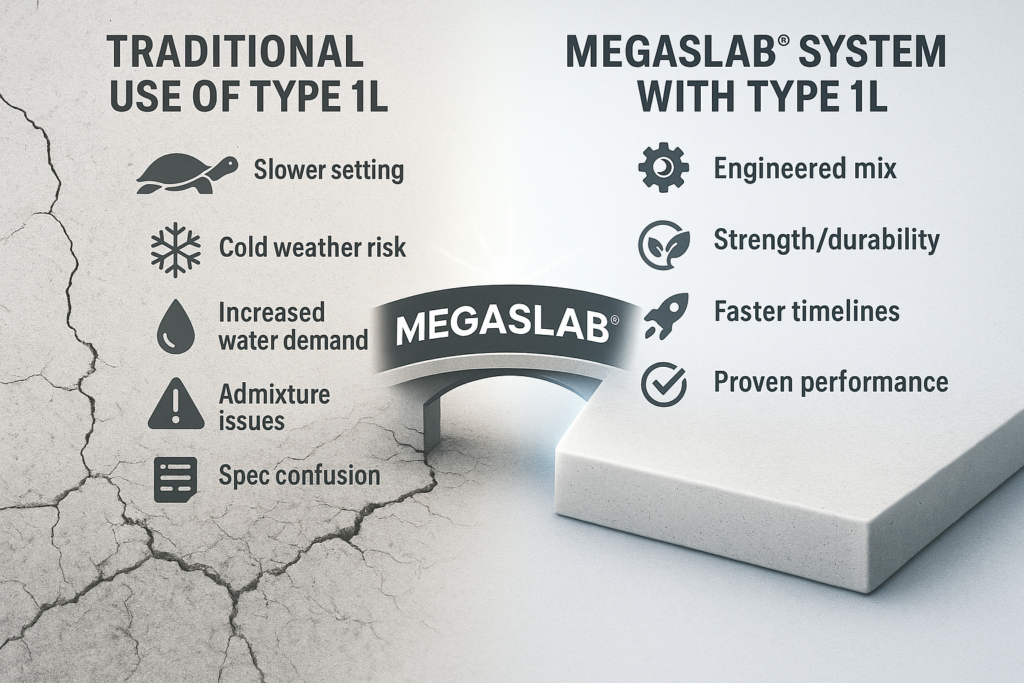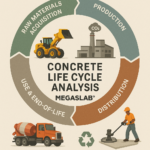As the construction industry continues to push toward sustainability, Type 1L cement – a Portland-limestone cement (PLC) with 5-15% finely ground limestone – has emerged as a popular lower-carbon alternative to traditional Type I cement. Its environmental benefits are undeniable, offering roughly 10% lower CO₂ emissions. But with this innovation comes a new set of challenges for contractors, engineers, and concrete producers.
Challenges of Type 1L Cement
While Type 1L cement performs comparably to Type I in many applications, it can create friction in field performance and construction logistics:
- Slower Setting and Early Strength Type 1L typically gains strength more slowly, especially in cold weather, which can delay finishing, formwork removal, and project timelines.
- Cold Weather Sensitivity Its lower heat of hydration means slower curing, requiring extended protection to avoid frost damage in cooler climates.
- Durability Concerns Without formulation tweaks, Type 1L may underperform in sulfate-rich environments and could be more permeable to chloride ions, raising durability concerns.
- Increased Water Demand The added limestone content often raises water demand and may reduce workability, requiring admixture recalibration.
- Admixture Compatibility Contractors may face issues with chemical admixtures that worked seamlessly with Type I, necessitating additional testing and adjustments.
- Spec Confusion and Market Resistance Because not all codes and specifications fully account for Type 1L, approval can be inconsistent. This, paired with contractor skepticism, has slowed its adoption.
- Inconsistent Quality Variability in limestone fineness and quality among cement producers can result in inconsistent performance.
MEGASLAB®: A System Approach That Unlocks Type 1L’s Potential
Despite these challenges, MEGASLAB® has proven that Type 1L cement can not only work – but excel – when used within a fully engineered concrete system.
Our experience integrating Type 1L into the MEGASLAB® platform has shown that many of the typical downfalls of 1L can be mitigated or eliminated with the right approach:
- System-Based Mix Design: MEGASLAB’s optimized formulations are designed specifically to balance workability, strength gain, and durability—even with higher limestone content.
- Moisture Management: By engineering for moisture retention, we overcome the slower hydration kinetics of Type 1L, especially in low-temperature environments.
- Improved Workability: Through fine-tuned admixture compatibility and internal curing strategies, we maintain high finishability without increasing water demand.
- Field-Proven Performance: MEGASLAB has already delivered successful large-scale projects using Type 1L cement, helping clients meet sustainability goals without sacrificing performance or durability.

Conclusion
While Type 1L cement presents certain drawbacks when used in traditional concrete practices, it represents a vital step forward in reducing embodied carbon in construction. The key is not to reject Type 1L for its limitations—but to rethink how it’s used. With MEGASLAB®, we provide a complete concrete system that turns those limitations into advantages. We’ve made 1L work—and work well.




